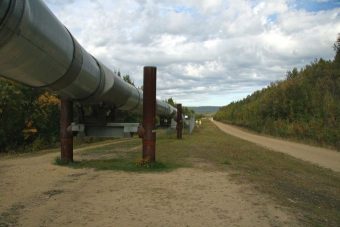
Led by the surge in Appalachia’s Marcellus and Utica plays, U.S. natural gas production has increased over 50% since 2005 and related infrastructure to move the gas has become short. This is really not just an issue for the U.S. but for the world: the Northeast shale gas boom is making U.S. natural gas a global commodity. Combined, Pennsylvania, Ohio, and West Virginia have rapidly evolved from producing 2.5% of U.S. gas in 2005 to nearly 30% today.
As Northeast supplies are wanted by many markets, the entire U.S. gas industry is being flipped from its decades-old way of operating, which was basically west-to-east and south-to-north. The industry has thus needed to re-learn receipt points and flows as the whole way of operations is transforming, a change that is being further affected by regulatory and social changes, such as the climate change-driven anti-fossil fuel movement. Not exactly a small problem.
The Northeast is still a highly constrained gas market and much of the region doesn’t have access to the local gas surge because there aren’t enough pipelines to take the gas away to markets. In fact, combined with low prices, this lack of infrastructure often has companies in the region curtailing gas production because there’s no way to move the gas out. Cabot Oil & Gas, which has been ranked as the 2nd biggest PA Marcellus producer (here), had to curtail 75 Bcf in 2015, or enough gas to heat more than 1.1 million homes for a year.
New England in particular has suffered and is easily the highest priced gas and power market in the country, with respective rates of 45% and 55% higher than the national average. Natural gas is promoted as a way to reduce New England’s over reliance on heating oil and oil-based power generation, the latter averaging a whopping 16.2 GWh/day in Winter 2014. When gas demand rises in New England, a lack of pipelines means pricer LNG imports from as far away as Yemen. Remember that residential heating gets priority over gas needed for utilities.
The “Not in My Backyard” obstacle is very strong in the Northeast. One problem has been that the Northeast is a relatively new area of major gas production, so residents aren’t used to the infrastructure required to produce more, unlike, say, Texans or Oklahomans. Moreover, the Northeast is generally more environmentally conscious and has a higher population density, which makes it tougher to lay pipelines.
This isn’t welcome news for an oil and gas industry already caught in a historically low price environment that is reducing revenues and making projects more difficult. We have seen gas infrastructure and pipeline projects delayed, denied, or cancelled that are worth billions of dollars, perhaps the largest being the $1 billion Constitution Pipelined headed up by Williams and Cabot. Anti-pipeline groups stress that combating climate change should simply focus on ramping up renewables, storage, energy efficiency, and other demand-side management programs.
Regulatory wise, FERC is the main permitting agency for interstate pipeline projects and is an independent actor that regulates the transmission of gas, electricity, and oil. Particularly in environmental matters, projects require certain state (and sometimes local) permits.
Source: forbes.com
